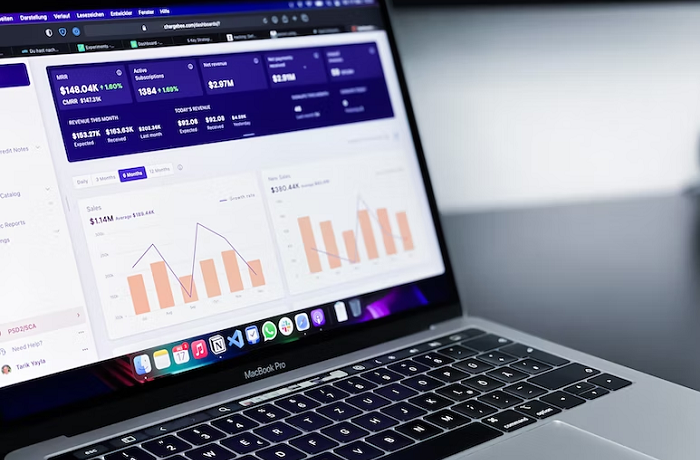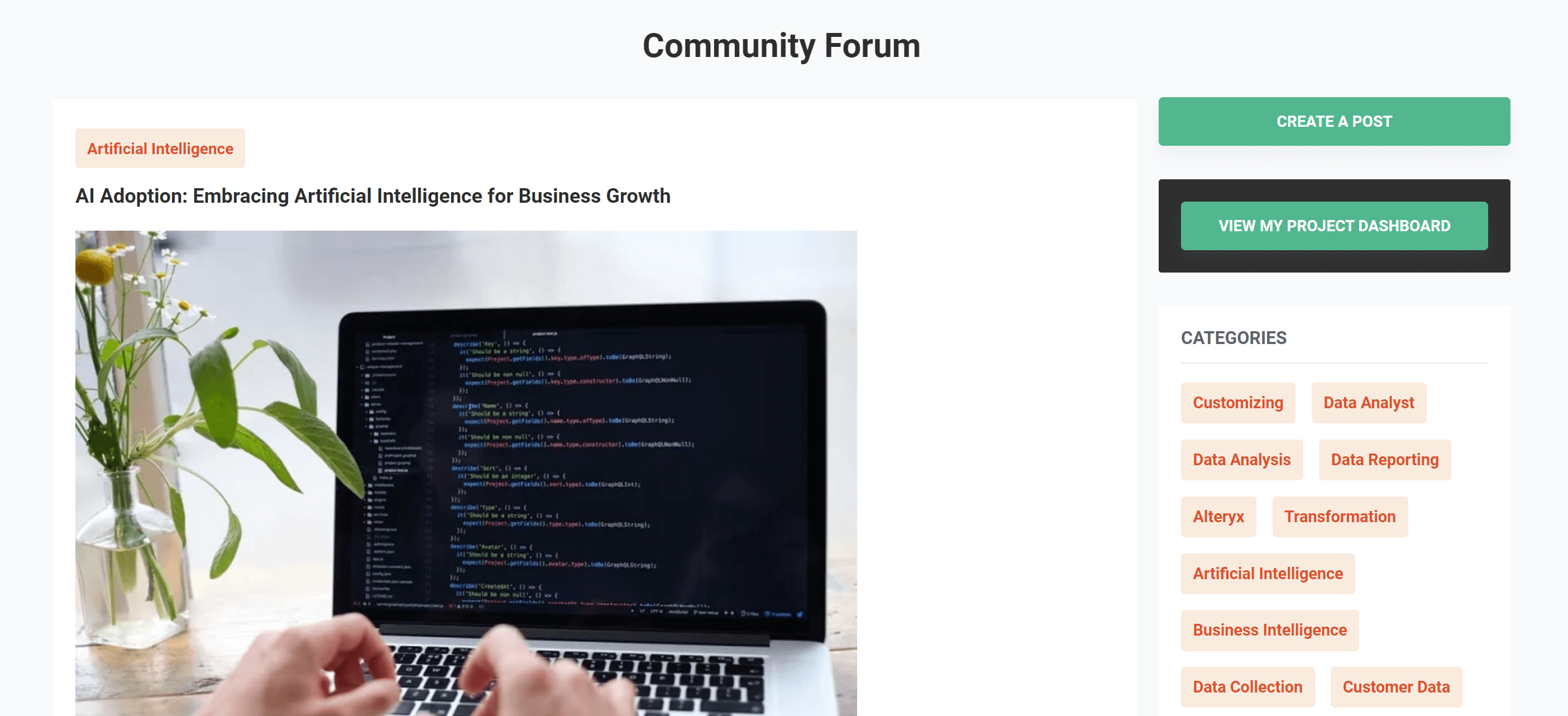Healthcare Data Analyst: Skills,Salary,Roles and Responsibilities in India

Table of Content
Introduction
Understanding Healthcare Data Analysis
Types of Data Analyzed in Healthcare
Skills Required to Become a Healthcare Data Analyst
Tools and Technologies Used in Healthcare Data Analysis
Job Opportunities for Healthcare Data Analysts
Healthcare Data Analyst Salary in India 2024
Conclusion
Introduction
The role of healthcare data analyst is important in today’s medical landscape, where data has become a cornerstone of decision-making processes and patient care improvement strategies. Healthcare data analysts are responsible for collecting, organising, and analysing vast amounts of healthcare data to derive actionable insights
Understanding Healthcare Data Analysis
What is Healthcare Data Analysis?
Healthcare data analysis refers to the process of examining and interpreting data related to healthcare systems, patient care, medical procedures, and health outcomes to derive meaningful insights and inform decision-making. It involves collecting, organizing, cleaning, and analysing vast amounts of healthcare data from various sources, such as electronic health records (EHRs), medical claims, clinical trials, and public health databases.
In today’s digital age, where vast amounts of healthcare data are generated daily, the importance of data analysis cannot be overstated. Here’s why data analysis is essential in healthcare:
Evidence-Based Decision Making: Data analysis enables healthcare professionals to make informed decisions based on empirical evidence rather than intuition or anecdotal observations. By analysing data from diverse sources such as electronic health records (EHRs), medical imaging, and clinical trials, healthcare providers can identify patterns, trends, and correlations that guide diagnosis, treatment planning, and patient management.
Predictive Analytics for Early Intervention: Data analysis facilitates predictive modelling and risk stratification, allowing healthcare providers to identify individuals at high risk for certain diseases or adverse health events. By leveraging predictive analytics algorithms, healthcare organisations can intervene proactively, implementing preventive measures and personalised interventions to mitigate risks and improve patient outcomes.
Quality Improvement and Performance Monitoring: Data analysis enables healthcare organisations to monitor and evaluate the quality, safety, and efficiency of healthcare services. By analysing clinical outcomes, patient satisfaction scores, and process metrics, healthcare leaders can identify areas for improvement, implement evidence-based interventions, and track progress over time to enhance the overall quality of care.
Population Health Management: Data analysis supports population health management initiatives by identifying health disparities, understanding disease prevalence, and targeting interventions to at-risk populations. Through population-level data analysis, healthcare organisations can design and implement public health programs, preventive screenings, and health promotion campaigns aimed at improving the health outcomes of entire communities.
Types of Data Analysed in Healthcare
Electronic Health Records (EHRs):
- EHRs contain comprehensive electronic records of patient health information, including medical history, diagnoses, medications, laboratory results, and treatment plans. Analysing EHR data allows healthcare providers to track patient progress, identify trends in health status, and ensure continuity of care across different healthcare settings.
Medical Claims Data:
- Medical claims data consist of billing information submitted by healthcare providers to insurance companies for reimbursement. Analyzing medical claims data enables payers, providers, and policymakers to assess healthcare utilization, cost patterns, reimbursement trends, and healthcare resource allocation.
Clinical Trials Data:
- Clinical trials data include data collected during clinical research studies to evaluate the safety, efficacy, and effectiveness of new medical treatments, drugs, or medical devices. Analyzing clinical trials data helps researchers and regulatory agencies assess the benefits and risks of interventions, inform treatment guidelines, and support evidence-based medicine.
Administrative Data:
- Administrative data encompass a wide range of non-clinical data collected for administrative and operational purposes, such as patient demographics, scheduling information, billing codes, and facility utilisation. Analysing administrative data provides insights into healthcare workflows, resource utilisation, and operational efficiency, helping healthcare organisations optimise processes and improve patient experiences.
Public Health Surveillance Data:
- Public health surveillance data include data collected by public health agencies to monitor and track the occurrence and spread of diseases, injuries, and other health-related events within a population. Analysing public health surveillance data helps identify disease outbreaks, assess health disparities, and inform public health interventions and policies.
Skills Required to Become a Healthcare Data Analyst
Becoming a successful healthcare data analyst requires a combination of technical expertise, analytical skills, and domain knowledge in healthcare. Here are the key skills required to excel in this role:
Technical Skills:
- Proficiency in Statistical Analysis Tools: Healthcare data analysts must be proficient in statistical analysis tools such as SAS, R, or Python for data manipulation, hypothesis testing, and predictive modeling.
- Data Visualization Skills: They should be skilled in data visualization tools like Tableau or Power BI to create insightful dashboards, charts, and graphs that communicate complex healthcare data effectively.
- Database Management: Understanding of database management systems (e.g., SQL) is essential for querying and manipulating large healthcare datasets stored in databases or data warehouses.
Analytical Skills:
- Critical Thinking: Healthcare data analysts need strong critical thinking skills to analyze complex healthcare data, identify patterns, outliers, and correlations, and draw meaningful insights to support decision-making.
- Problem-Solving: They should possess excellent problem-solving skills to address data quality issues, resolve discrepancies, and troubleshoot technical challenges encountered during data analysis projects.
Domain Knowledge:
- Understanding of Healthcare Systems: Healthcare data analysts should have a solid understanding of healthcare systems, including healthcare delivery models, regulatory requirements, reimbursement mechanisms, and clinical workflows.
- Knowledge of Healthcare Terminology: Familiarity with medical terminology, disease classifications (e.g., ICD-10, CPT), and healthcare coding standards is necessary to interpret healthcare data accurately and ensure data integrity.
- Awareness of Healthcare Trends: Staying updated with emerging trends, technologies, and challenges in healthcare, such as value-based care, population health management, and telemedicine, is crucial for informed decision-making and strategic planning.
Communication Skills:
- Effective Communication: Healthcare data analysts should possess strong verbal and written communication skills to articulate complex data analysis findings, insights, and recommendations to diverse stakeholders, including healthcare professionals, executives, policymakers, and non-technical audiences.
- Collaboration: They must be able to collaborate effectively with interdisciplinary teams, including clinicians, researchers, IT professionals, and business stakeholders, to define data analysis objectives, gather requirements, and translate business needs into analytical solutions.
Tools and Technologies Used in Healthcare Data Analysis
Healthcare data analysis relies on a variety of tools and technologies to collect, manage, analyze, and visualize healthcare data effectively. Here are some of the key tools and technologies used in healthcare data analysis:
Data Analysis Software:
- SAS: SAS (Statistical Analysis System) is a widely used software suite for advanced statistical analysis, data management, and predictive modeling in healthcare research, clinical trials, and epidemiological studies.
- R: R is a powerful open-source programming language and software environment for statistical computing and graphics. It is commonly used for data analysis, visualisation, and machine learning in healthcare research and bioinformatics.
- Python: Python is a versatile programming language with libraries like Pandas, NumPy, and SciPy that are commonly used for data manipulation, analysis, and machine learning tasks in healthcare analytics.
Data Visualization Tools:
- Tableau: Tableau is a leading data visualization software that enables healthcare data analysts to create interactive dashboards, charts, and reports to visualize and communicate insights derived from healthcare data effectively.
- Power BI: Microsoft Power BI is a business analytics tool that allows healthcare organizations to visualize and explore healthcare data, create interactive reports, and share insights across the organization.
Electronic Health Record (EHR) Systems:
- EHR systems such as Epic, Cerner, and Allscripts are electronic systems for documenting and storing patient health information. Healthcare data analysts often leverage EHR data for clinical research, quality improvement, and population health management initiatives.
Database Management Systems (DBMS):
- SQL (Structured Query Language): SQL is a standard programming language for managing and querying relational databases. Healthcare data analysts use SQL to extract, manipulate, and analyze healthcare data stored in databases, data warehouses, and data lakes.
- NoSQL Databases: NoSQL databases like MongoDB and Cassandra are used for storing and analyzing unstructured or semi-structured healthcare data, such as medical images, genomic data, and sensor data.
Business Intelligence (BI) Platforms:
- Qlik: Qlik is a business intelligence and data analytics platform that enables healthcare organizations to visualize, analyze, and explore healthcare data to uncover insights and make data-driven decisions.
- Domo: Domo is a cloud-based BI platform that provides healthcare organizations with real-time insights and data visualization capabilities to monitor key performance indicators (KPIs) and drive strategic initiatives.
Machine Learning and Predictive Analytics Tools:
- TensorFlow: TensorFlow is an open-source machine learning framework developed by Google for building and deploying machine learning models. Healthcare data analysts use TensorFlow for tasks such as predictive modeling, image recognition, and natural language processing in healthcare applications.
- scikit-learn: scikit-learn is a popular machine learning library in Python that provides simple and efficient tools for data analysis and machine learning tasks, such as classification, regression, clustering, and dimensionality reduction.
Job Opportunities for Healthcare Data Analysts
Healthcare data analysts are in high demand across various sectors of the healthcare industry due to the growing emphasis on data-driven decision-making, quality improvement, and population health management. Here are some of the job opportunities available for healthcare data analysts:
Healthcare Providers:
- Hospitals and Health Systems: Large healthcare organizations employ healthcare data analysts to analyze clinical and administrative data, identify areas for quality improvement, and optimize operational efficiency.
- Clinics and Physician Practices: Healthcare data analysts support smaller healthcare practices by analyzing patient data, optimizing workflows, and implementing data-driven strategies to enhance patient care and outcomes.
- Long-Term Care Facilities: Nursing homes, assisted living facilities, and other long-term care providers hire healthcare data analysts to analyze resident data, monitor care quality, and ensure compliance with regulatory requirements.
Healthcare Payers:
- Health Insurance Companies: Insurance companies employ healthcare data analysts to analyze claims data, assess healthcare utilization patterns, and develop predictive models for risk assessment and population health management.
- Managed Care Organizations (MCOs): MCOs leverage healthcare data analysts to analyze member data, monitor healthcare costs, and implement care management programs aimed at improving member health outcomes and controlling costs.
Healthcare Technology Companies:
- Electronic Health Record (EHR) Vendors: EHR vendors hire healthcare data analysts to analyze EHR data, develop data analytics solutions, and provide insights to healthcare providers on optimizing EHR usage and clinical workflows.
- Healthcare Analytics Software Providers: Companies that specialize in healthcare analytics software hire healthcare data analysts to develop and maintain analytical tools, perform data analysis for clients, and provide consulting services on data-driven decision-making.
Healthcare Consulting Firms:
- Healthcare consulting firms employ healthcare data analysts to work on projects related to healthcare data analysis, performance improvement, and healthcare IT implementation. Analysts may work with clients to analyze data, identify opportunities for improvement, and develop strategies for enhancing healthcare delivery and outcomes.
Research Institutions and Academia:
- Academic Medical Centers: Academic medical centers hire healthcare data analysts to support research projects, analyze clinical trial data, and conduct outcomes research to advance medical knowledge and improve patient care.
- Universities and Research Institutes: Universities and research institutes employ healthcare data analysts to analyze healthcare data for academic research, public health studies, and health services research aimed at addressing healthcare disparities and improving population health.
Government Agencies and Public Health Organizations:
- Health Departments: State and local health departments hire healthcare data analysts to analyze public health data, monitor disease outbreaks, and evaluate the effectiveness of public health interventions.
- Federal Agencies: Government agencies such as the Centers for Disease Control and Prevention (CDC), the National Institutes of Health (NIH), and the Agency for Healthcare Research and Quality (AHRQ) employ healthcare data analysts to support research, surveillance, and policy development initiatives.
Healthcare Data Analyst Salary in India 2024
The salary range for Healthcare Data Analysts in India varies from ₹1.2 Lakhs to ₹9.5 Lakhs, with an average annual salary of ₹6.7 Lakhs. These salary estimates are based on data collected from 83 recent salary reports submitted by Healthcare Data Analysts.
Conclusion
In summary, freelance Healthcare Data Analysts have the opportunity to build a rewarding career in the healthcare industry by leveraging their skills, expertise, and passion for data analytics. By aligning with the Pangaea X brand and promoting its values, freelancers can establish themselves as trusted partners in driving innovation, improving healthcare outcomes, and shaping the future of healthcare through data-driven insights.
Get your data results fast and accelerate your business performance with the insights you need today.



